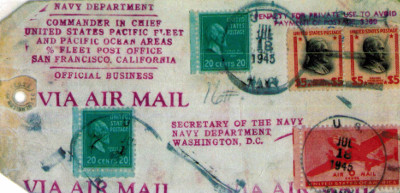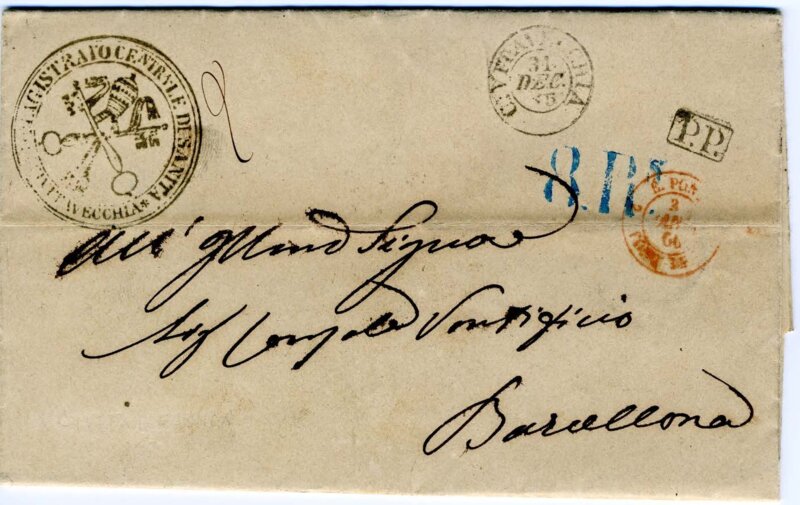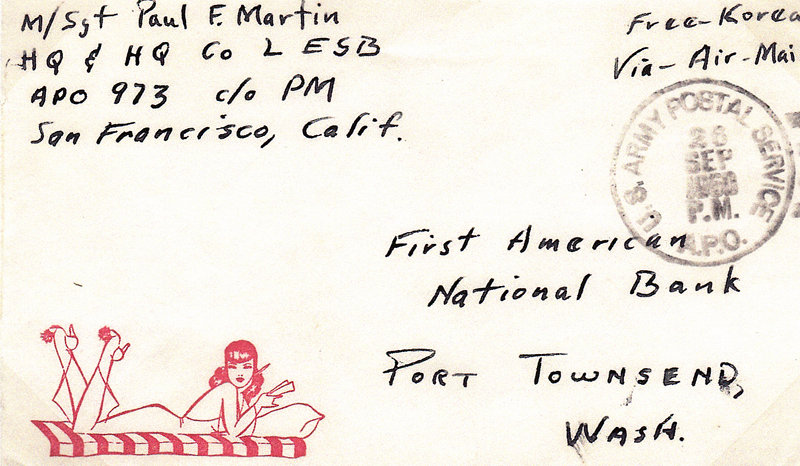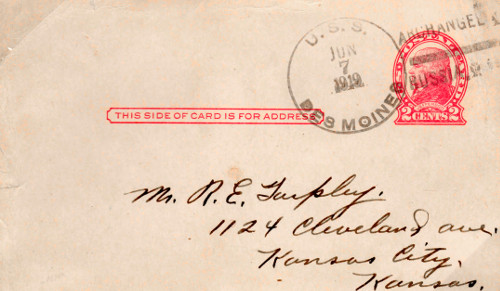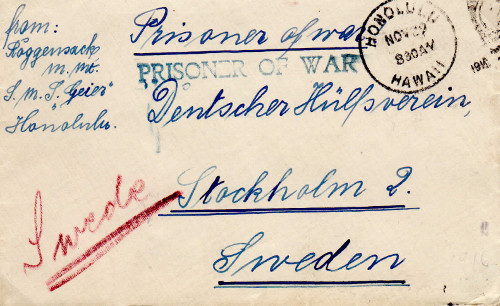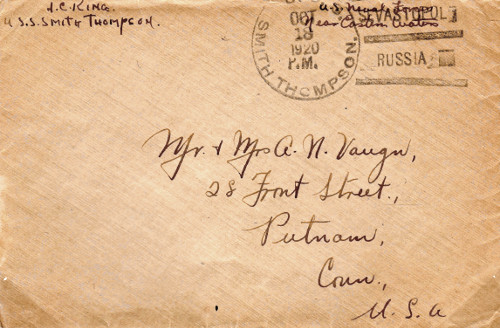Tom Pratuch
Papal States:
Military Mail of the Papal States
[Author: Tom Pratuch]. This military postal history study examines military mail of the Papal States after the establishment of European
national boundaries by the Congress of Vienna. The exhibit presents the rates, routes, and markings for military mail. With
a delineated territorial responsibility and the removal of foreign troops, the Papal States established a coherent military
force that lasted until the unification with Italy in 1870.
Al Kugel
Military Mail: Allied Forces in the Baltic Area in the Aftermath of World War I [Author:
Alfred F. Kugel].
This exhibit was created to illustrate mail generated by the Allied military forces sent to the Baltic area following the official end of WWI. The number of men was small, and examples of their correspondence has been difficult to locate. The order of the exhibit is geographical, starting at the west and south of the Baltic, and moving to the north and east (i.e., from Danzig to Finland).
Military Mail:
United States Intervention in North Russia During and After the First World War [Author:
Alfred F. Kugel].
This exhibit was created to illustrate mail generated by
U. S. military forces sent to intervene in North Russia both before and after the official end of WWI.
Military Mail:
United States Intervention in Siberia During and After the First World War [Author:
Alfred F. Kugel].
This exhibit was created to illustrate mail generated by
U. S. personnel and military forces sent to intervene in Siberia both during and following the official end of WWI.
Military Mail:
United States Intervention in South Russia After the First World War, 1919-1922 [Author:
Alfred F. Kugel].
This exhibit was created to illustrate mail generated by
U. S. military forces sent to intervene in South Russia following the official end of WWI.
Germany: Allied Plebiscite Activities in Germany, 1920-1921 [Author:
Alfred F. Kugel].
This exhibit illustrates mail sent by plebiscite personnel to parts of Germany in order to ascertain whether inhabitants of disputed border territories wished to remain with their home country, or become citizens of new ones formed following the end of World War I. In most cases, the number of people involved in these polling processes was relatively small, and their assignment time-wise was relatively short.
Military Mail: European Boundary Commission Activity on the Aftermath of World War I. [Author:
Alfred F. Kugel].
WWI was long and bitterly fought, resulting in sentiments against the losers being high by the time of the 1918 Armistice. Consequently, the victors were determined to exact a significant price from their enemies in terms of territorial concessions. To that end, a series of Allied Boundary Commissions were formed under the various treaties with the Central Powers to draw up new borders considered appropriate. Primarily British and French military cartographic personnel staffed these Commissions, with Italy being a significant third participant. As a member of the Allies, Japan was invited to send representatives, even though its interest in European affairs was limited. In most cases, the staffs of the commissions were relatively small, and it appears that they didn't post much mail.
Philippines: Spanish-American War, 1898 [Author:
Alfred F. Kugel].
The United States declared war on Spain on 21st April 1898, and an expeditionary force was assembled in preparation to the occupation of the Philippines. An armistice was signed on 12th August, but a Filipino insurrection led by Emilio Aguinaldo required the presence of a substantial American military force, which finally defeated the rebels on 16th April 1902.
United States: The 'Prexies' Go To War [Author:
Alfred F. Kugel].
At various times during 1938, thirty-two denominations of new definitive postage stamps were issued in what was then-named the ‘Presidential Series’, and more colloquially as ‘The Prexies’, since all but three of the values depicted former presidents. The purpose of this exhibit is to show examples of all of the series’ values as used in a military context.
Saar: Allied Plebiscite Activity in the Saar Territory, 1935 [Author:
Alfred F. Kugel].
This exhibit illustrates mail sent by plebiscite personnel assigned to the Saar Territory in the mid-1930s to determine whether the inhabitants wished to be reunited with Germany, continue to be administered by the League of Nations, or be annexed to France. The number of people involved in these polling processes was relatively small, and their assignment time-wise was relatively short.
Military Mail: Mail of the Congress of Versailles, 1919 (re-scanned) [Author:
Alfred F. Kugel].
In the wake of the Armistice agreement on 11th November 1918, the Allied and their Associated Powers met at the Château de Versailles to define the terms of peace with a defeated Germany. The formal signing ceremony took place in the ‘Hall of Mirrors’ in the Château on 28th June 1919. The order in which the material is exhibited is alphabetic for the Allies, then followed by covers from the German delegation.
Jerry Miller
German Occupation of Channel Islands:
Valid Postage and Mail During German Occupation of Guernsey and Jersey 1940 - 1945
[Author: Jerry Miller].
The British Islands of Guernsey & Jersey were occupied by German Forces 1 July 1940 to 8 May 1945. During occupation, post office operation with exchange of mail on each island or between islands continued using British Postage until such was exhausted. In October 1940, local production of postage stamps for local use was decided (printed by two local & one French printing plants) recognized by British Postal Officials, even after liberation, remaining valid for use until 13 April 1946.
Allied Occupation of Rhineland:
Watch on the Rhine
[Author: Jerry Miller].
Commencing with the Armistice of 11 November 1918, this exhibit shows the evolution of
the Allied Occupation of the Rhineland, German civilian, commercial & official
censored mail during the period, Allied evacuation by 1930 and an epilogue, as closure.
Postal History:
The Evolution of ‘via Siberia’ Mail .. 1897-1945
[Author: Jerry Miller].
This postal history exhibit shows the evolution of mail endorsed or routed ‘via Siberia’ from trial & early mail, through periods of war & revolution as well as expansion of mail services upon connection of the Trans-Siberian Railway network with the Southern Manchurian & Eastern Chinese Railways, thereby enabling movement of Far East, German Pacific Colony ‘and other mail to/from Europe as well as mail to Africa.
China, German Intervention:
German Intervention in China
[Author: Jerry Miller]. This exhibit describes the general
history of Germany's intervention in China from the late
19th Century to 1919. Both diplomatic and military
postal history is illustrated and described. (This exhibit
was updated in 2023.)
Military Mail:
The American Occupation of the Rhineland 1918-1923
[Author: Jerry Miller]. This exhibit shows postal history associated
with the United States' occupation of the German Rhineland
after the First World War.
Other Authors
Korean War:
Korean War Postal History [Author: Bob Collins]
This massive award-winning exhibit covers a wide array
of postal history from the Korean conflict.
War on Terror: More Letters from the Sand [Author: David Kent]
The purpose of this exhibit is to examine a selection of
covers, mailed from military units in Iraq and nearby
countries during the years 2003 to 2005, during the
'War on Terror'.

